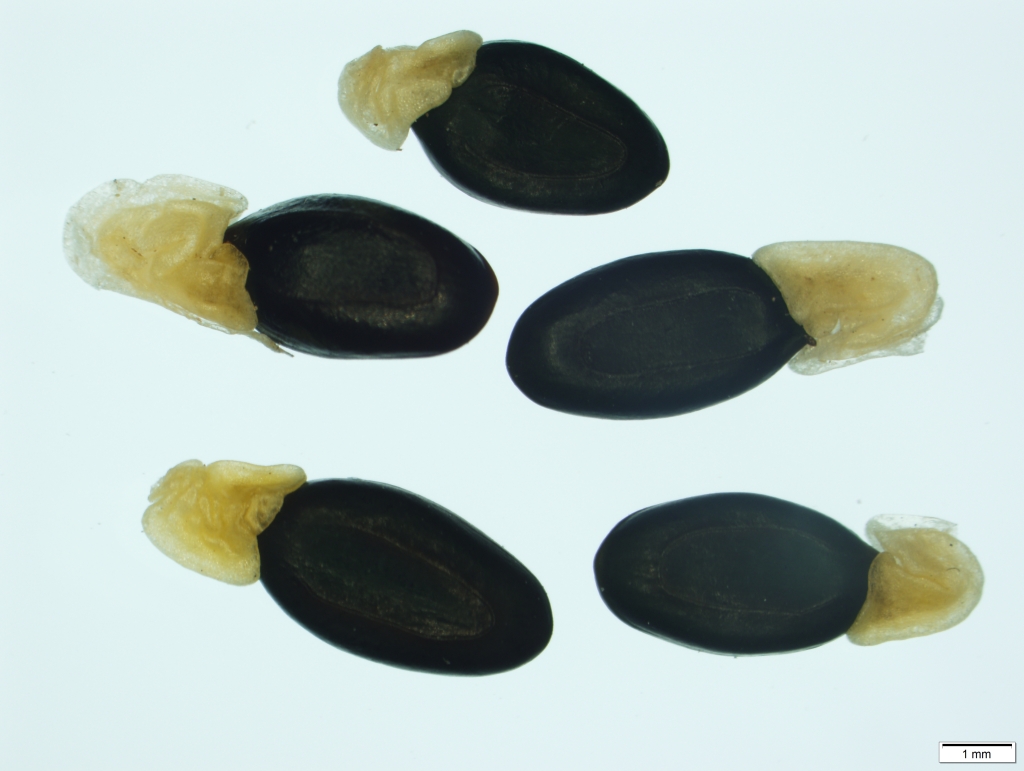Acacia farinosa
Lindl. Mealy WattleRounded shrub, 1–2 m high; branchlets terete with low ridges, glabrous except nodes which have appressed, minute hairs. Phyllodes oblanceolate to linear-oblanceolate, commonly 2–7 cm long, 2–6 mm wide, rigid, slightly curved, thick-fleshy, with appressed, minute hairs on pulvinus and blade-base, apex rounded-obtuse, minutely callose-mucronate; main veins 2–7, immersed to slightly raised, distant, with secondary veins often appearing as irregular, incomplete lines. Peduncles mostly 2–4 mm long, with appressed, minute hairs; heads globular, 3.5–4 mm diam., 7–17-flowered, golden, subtended by c. 5 thick, ovate, acute, sterile bracteoles at or near peduncle apex (those in heads peltate-spathulate). Flowers 5-merous; sepals free, white-resinous. Pod linear, to 6 cm long, 2–3 mm wide, crustaceous, rigid, curved and twisted, glabrous; seeds longitudinal, elliptic, 3.5–4 mm long, black, funicle fleshy, aril small, apical. Flowers Jul.–Nov.
LoM, MuM, Wim, GleP, GGr, HSF. Also SA. Scattered through western Victoria between about Edenhope and Swan Hill, mostly in sand and loam in shrubland and woodland, often associated with Eucalyptus incrassata.
Related to A. dawsonii which has linear phyllodes and the flower heads in short racemes with the heads subtended by an involucre-like ring of thick, fleshy, semicircular bracteoles.
Entwisle, T.J.; Maslin, B.R.; Cowan, R.S.; Court, A.B. (1996). Mimosaceae. In: Walsh, N.G.; Entwisle, T.J., Flora of Victoria Vol. 3, Dicotyledons Winteraceae to Myrtaceae, pp. 585–658. Inkata Press, Melbourne.
 Spinning
Spinning

